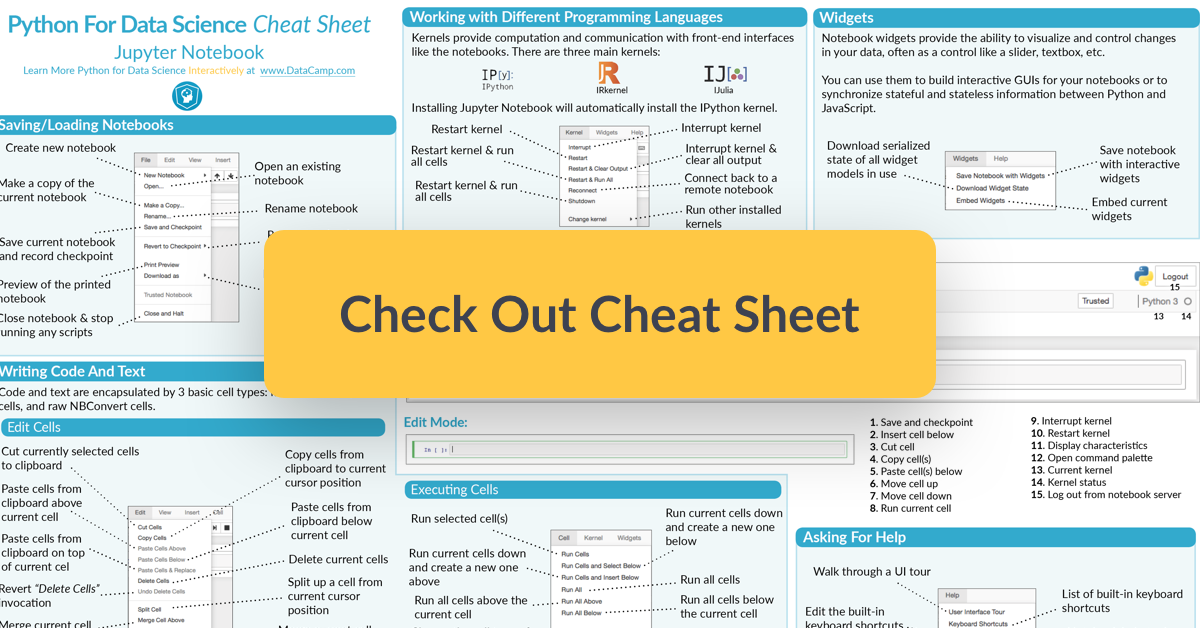

You can also visit the menu bar’s Help > Edit Keyboard Shortcuts link to edit the existing shortcuts or add more shortcuts. You can use all these Jupyter Notebook shortcuts in your daily work. P – to open the command palette Conclusion Shift + M – to merge chosen cells, or the present cell with the cell below in case only one cell is selected

Shift + down – to extend chosen cells belowĪlt + enter or Shift + enter – to run the present cell, select below Shift + up – to extend chosen cells above Y – to change the present cell back to codeĭ + D (you’ll have to press the key twice) – to delete the present cell M – to change the present cell to Markdown mode (which is good for documentation) Option + scrolling click – to do column editingĪ – to insert a new cell above the present cellī – to insert a new cell below the present cell Edit ModeĬtrl + up arrow or Ctrl + Home– to go to cell startĬtrl + down arrow or Ctrl + End – to go to cell endĬtrl + left arrow – to go to the start of the present or previous wordĬtrl + right arrow – to go to the end of present or next wordĬtrl + / – to toggle comment of present (or selected) line(s)Ĭtrl + ] – to indent present (or selected) line(s)Ĭtrl + [ – to unindent present (or selected) line(s)Ĭtrl + y or Ctrl + shift + z – to redo your last action Both adding a cell above and below the current one can also be done by using the keyboard shortcuts A and B while in Command mode. Given below are some Jupyter Notebook shortcuts that would make your job easier and help save precious time. From the command mode, you’ll need to press enter to move to the edit mode on the cell that you have selected. If you’re in the edit mode, you can press esc to move to the command mode. Jupyter Notebooks support many helpful Keyboard shortcuts, including ones for most of the buttons in your toolbar.
#Jupyter notebook shortcuts code#
This can be especially helpful if you’re using Jupyter Notebook for Python. The JupyterLab Notebook has two different keyboard input modes: 1- Edit mode allows you to type code or text into a cell. If you want to write code a lot faster and in an easier way, you just can’t ignore the benefits of Jupyter Notebook shortcuts. You can use it for machine learning, numerical simulation, data cleaning and transformation, data visualization, statistical modeling, and a lot more. In other words, the Jupyter notebook contains both code (for instance, Python) and rich text elements (such as equations, paragraphs, etc). Jupyter notebook is a flexible, open-source web application that helps you create and share readable analyses and documents, which contain images, live codes, comments, equations, formulae, narrative texts, visualizations, and plots together.


 0 kommentar(er)
0 kommentar(er)
